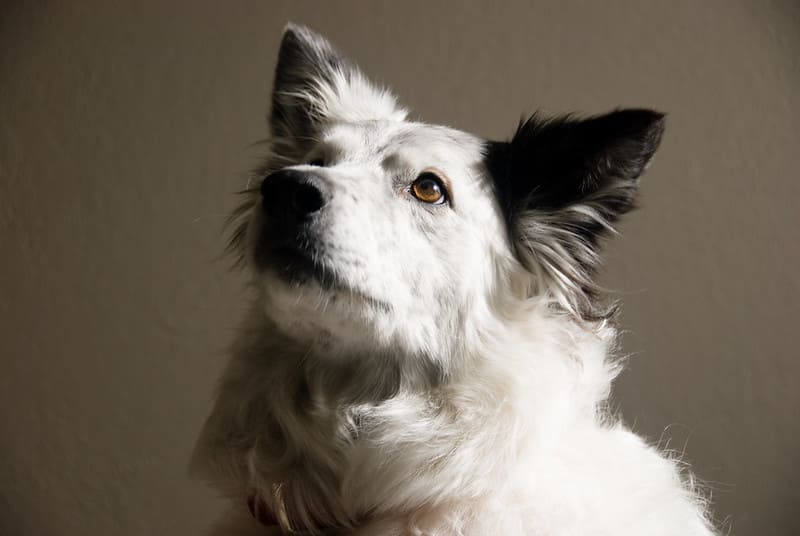Chocolate is a delightful treat for humans, but for dogs, it can be a toxic and potentially life-threatening substance. The consequences of a dog consuming chocolate depend on various factors, such as the type and amount of chocolate ingested and the dog’s weight. In this comprehensive article, we will explore the reasons behind chocolate’s toxicity to dogs, the signs of chocolate poisoning, what to do if your dog eats chocolate, and how to prevent such incidents.

Why Chocolate Is Toxic to Dogs
Chocolate contains two primary substances that make it toxic to dogs: theobromine and caffeine. These chemicals can significantly affect a dog’s cardiovascular and nervous systems when ingested. The level of risk depends on the type of chocolate consumed and the quantity relative to the dog’s weight.
Types of Chocolate Ranked by Theobromine Content
- Cocoa Powder (most toxic)
- Unsweetened Baker’s Chocolate
- Semisweet Chocolate
- Dark Chocolate
- Milk Chocolate
Theobromine content is highest in cocoa powder and unsweetened baker’s chocolate, making them extremely dangerous for dogs. Milk chocolate, with the lowest theobromine content, is comparatively less toxic.
Knowing how much and what type of chocolate your dog has consumed is vital in assessing the level of danger. There are calculators available to help you determine the risk. In general, mild symptoms of chocolate toxicity occur when a dog consumes around 20 mg of methylxanthines (theobromine and caffeine) per kilogram of body weight. Cardiac symptoms occur at 40 to 50 mg/kg, while seizures are likely at dosages exceeding 60 mg/kg.
To put it simply, a potentially life-threatening dose of chocolate is approximately one ounce of milk chocolate per pound of the dog’s body weight. Smaller amounts, such as a crumb of chocolate cake or a small piece of a chocolate bar, may not be immediately lethal, especially for larger dog breeds. Nevertheless, dogs should never be fed chocolate as a treat. Safe alternatives, like carob-based treats, are readily available and just as tasty for canines.

What Are the Signs of Chocolate Poisoning?
When a dog consumes chocolate, they may experience chocolate poisoning. The symptoms typically appear within six to 12 hours after ingestion, although this can vary. It’s important to note that older dogs and those with pre-existing heart conditions are at a higher risk of sudden death due to chocolate poisoning. The symptoms can persist for up to 72 hours and may include:
- Vomiting
- Diarrhea
- Restlessness
- Increased Urination
- Tremors
- Elevated or Abnormal Heart Rate
- Seizures
- Collapse and Death
If you suspect that your dog has ingested chocolate, it’s crucial to act promptly. Contact your veterinarian immediately or the Pet Poison Helpline at 855-213-6680 for advice. If your regular vet is unavailable, some services offer live chat and video options to connect you with a veterinarian. Your veterinarian will assess the situation based on your dog’s size and the amount and type of chocolate consumed.
In some cases, if your dog consumed chocolate within the last two hours, the veterinarian may induce vomiting and administer activated charcoal to help remove the toxins from the body without absorption into the bloodstream. More severe cases may require additional medical treatment, such as medications or intravenous fluids. Dogs experiencing seizures may need to be monitored at the clinic overnight.
How to Prevent Your Dog from Eating Chocolate
Prevention is always the best course of action to keep your dog safe from chocolate poisoning. Here are some tips to ensure your furry friend stays away from this dangerous treat:
1. Keep Chocolate Out of Reach
Store all chocolate items, including cocoa powder and hot chocolate mix, in places your dog cannot access, like high shelves or closed-door pantries. Remind family members and guests to keep chocolate out of the dog’s reach and not leave it on countertops, tables, or in purses. This precaution is especially crucial during holidays when sweets like Halloween candy, Easter baskets, Valentine’s Day treats, Christmas stockings, and Hanukkah coins (gelt) are common.
2. Teach Them to “Leave It”
Teaching your dog the “leave it” command can be highly effective in preventing them from consuming anything they find on the ground or within their reach during walks. This is a relatively simple command to teach and can be a lifesaver.
3. Crate Train Your Dog
One of the most secure ways to ensure your dog doesn’t ingest anything harmful when you’re not supervising them is through crate training. Select a sturdy dog crate that provides enough room for your dog to stand and turn around comfortably. Make it a cozy and safe place with items like stuffed chew toys, their favorite blanket, or treats to make them feel at ease.

FAQs: What Happens When A Dog Eats Chocolate?
What should I do if my dog eats chocolate?
If your dog has consumed chocolate, you should contact your veterinarian immediately, especially if it’s a substantial amount or a type of chocolate that is toxic to dogs. Timely intervention is crucial to prevent potential health issues.
Why is chocolate harmful to dogs?
Chocolate contains theobromine and caffeine, which are stimulants that can be toxic to dogs. These substances affect a dog’s nervous system and cardiovascular system, potentially leading to symptoms like vomiting, diarrhea, rapid heart rate, and even seizures.
Are all types of chocolate equally dangerous to dogs?
No, not all chocolates are equally harmful. Dark chocolate and unsweetened baking chocolate contain higher levels of theobromine and caffeine, making them more toxic to dogs. Milk chocolate has lower levels but can still be dangerous if consumed in large quantities.
What are the symptoms of chocolate poisoning in dogs?
Symptoms of chocolate poisoning can include vomiting, diarrhea, increased heart rate, restlessness, tremors, seizures, and, in severe cases, it can even lead to coma or death.
How is chocolate poisoning in dogs treated?
Treatment will vary depending on the amount and type of chocolate consumed, as well as your dog’s size and health. Treatment may involve inducing vomiting, administering activated charcoal to absorb toxins, providing intravenous fluids, and medications to control symptoms. Always consult a veterinarian for guidance.

Is there a safe amount of chocolate for dogs?
There is no safe amount of chocolate for dogs. Even small quantities can cause adverse effects, especially in smaller breeds. It’s best to avoid giving your dog chocolate altogether.
How can I prevent my dog from accessing chocolate?
Keep all chocolate products, including cocoa powder and chocolate chips, out of your dog’s reach. Be cautious about chocolate-containing foods such as brownies and cookies. Educate family members and visitors about the dangers of feeding chocolate to dogs.
What are some dog-friendly treats I can offer instead of chocolate?
There are many dog-safe treats available, including commercial dog treats, vegetables like carrots or cucumber, and fruits like apples (without seeds). Always check with your veterinarian for guidance on what’s safe for your specific dog.
Can some dogs tolerate chocolate better than others?
No, chocolate is toxic to all dogs regardless of their breed or size. While some dogs may show fewer symptoms or seem less affected, it doesn’t mean it’s safe for them.
How long does it take for symptoms to appear after a dog eats chocolate?
The onset of symptoms can vary depending on factors such as the type of chocolate, the dog’s size, and the amount ingested. Symptoms may appear within a few hours, and in severe cases, they can develop rapidly. However, it’s crucial to remember that it’s not always immediate, and sometimes symptoms may be delayed.
Conclusion
In conclusion, dogs and chocolate are a dangerous combination. Chocolate contains theobromine, a chemical that can be lethal to dogs. To protect your four-legged companion, it’s crucial to be vigilant about chocolate accessibility and educate yourself about the types and amounts of chocolate that can pose a risk. If, despite your best efforts, your dog manages to consume chocolate, quick action and contacting your veterinarian are essential for their safety. Prevention, however, remains the best strategy to keep your beloved pet away from the potential dangers of chocolate.
